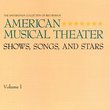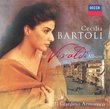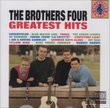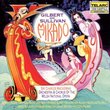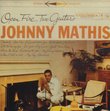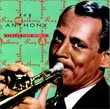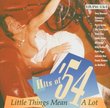| All Artists: Ludwig van Beethoven, David Zinman, Zurich Tonhalle Orchestra Title: Beethoven: Symphonies 3 "Eroica" & 4 Members Wishing: 0 Total Copies: 0 Label: Arte Nova Classics Release Date: 5/10/2005 Genre: Classical Styles: Historical Periods, Classical (c.1770-1830), Symphonies Number of Discs: 1 SwapaCD Credits: 1 UPC: 723721103255 |
Search - Ludwig van Beethoven, David Zinman, Zurich Tonhalle Orchestra :: Beethoven: Symphonies 3 "Eroica" & 4
 | Ludwig van Beethoven, David Zinman, Zurich Tonhalle Orchestra Beethoven: Symphonies 3 "Eroica" & 4 Genre: Classical
"David Zinman?s account of the Fourth Symphony is fleet and mercurial, as compelling a case as we have for honouring Beethoven?s fast metronome markings and, in the finale, bursting with unforced vitality...Few Beethoven F... more » |
Larger Image |
CD DetailsSynopsis
Album Description "David Zinman?s account of the Fourth Symphony is fleet and mercurial, as compelling a case as we have for honouring Beethoven?s fast metronome markings and, in the finale, bursting with unforced vitality...Few Beethoven Fourths tell a happier tale, and there is none at budget price that even begins to compete with this one... Viewed as a whole, Zinman?s Eroica levels with various up-tempo period-instrument alternatives, though its many distinguishing features include a notably animated and quick-witted first-movement development section. The Marcia funebre is a very marchable quaver=80 (Beethoven?s prescribed tempo), with sundry unfamiliar embellishments to the oboe line and some rugged drama later on...In other respects, and taking on board various minor novelties of phrase and nuance, Zinman parades a lean, sprightly, incisively articulated Eroica, ?late classical? rather than ?early romantic? in style (very roughly speaking) and a joyous alternative to the grand though heavy artillery favoured by earlier generations of conductors. Of course, I wouldn?t want to miss out on them, either; but Zinman helps adjust our ears for a new perspective ? without dropping the pitch or inflicting enfeebled string sonorities on us (not my cup of tea, as you may already have guessed). For my money ? and, happily, not much of it is needed ? his is the most palatably performed presentation of the Beethoven symphony as valeted by modern scholarship. The recordings are generally first-rate." GRAMOPHONE (February 1999) Similarly Requested CDs
|
CD ReviewsExploring the Beethoven Symphonies -- Nos. 3 and 4 Robin Friedman | Washington, D.C. United States | 09/24/2007 (5 out of 5 stars) "In the 1990s, the American conductor David Zinman recorded the nine Beethoven symphonies with the Tonhalle Orchester Zurich using a new performing edition (the Barenreiter edition) by Jonathan Del Mar. Zinman gives a period reading of the symphonies using modern instruments. Zinman's budget-priced readings are available in a complete set of 5 CDs or on individual disks. I prefer the listening and reviewing based upon the latter approach, as it allows more attention to each individual work. This CD includes the "Eroica" symphony, no. 3 in E flat, op. 55, and the symphony no. 4 in B flat, op. 60. Zinman's performances of these works are among his best of the nine. Tempos are very fast, but the performances have a great fluidity and lightness. The winds are especially prominent especially in solo passages, some of which are unique to the Barenreiter edition. For listeners new to this music, Beethoven's Eroica, dating from 1804, in its size, grandeur, and emotion, is a monumental work which changed the course of music. The work bears a close connection to Napoleon, but Beethoven's final product is a tribute to the heroic and creative spirit in man, rather than in any individual. Professor Lewis Lockwood, in his recent book on Beethoven has aptly-described the Eroica: "The 'hero' of the Eroica is not a single figure but a composite of heroes of different types and different situations. In the first movement the heroic is felt in musical images that evoke grandeur, conflict, and nobility of spirit; in the slow movement a fallen hero is mourned and brought to final rest; in the Scherzo and above all the Trio, we hear horn calls to battle, alsong with 'a strange voice' at the end, a return to the chromatic mystery of the the symphony's opening ideas. And the finale evokes a 'Promethean' hero who (in the ballet, its direct antecedent brought wisdom and the arts and sciences to the world." ("Beethoven: The Music and the Life", p. 213) Zinman offers a strong, flowing reading of the Eroica, with the Del Mar edition including some surprises in instrumentation in the finale. The horns in the first and third movement and the tympani in the second movement together with the winds in general receive marked prominence in Zinman's performance of this grand, inexhaustible work. Beethoven's Fourth symphony dates from 1806 and, unfortunately, remains the least performed of the nine. Too often, Beethoven has become associated only with the heroic style of the Eroica and a handful of other works. Works such as the Fourth symphony are compared with the "heroic" style and unfairly judged as not meeting its standard. In fact, Beethoven cannot be encompassed in any one style, and the Fourth is a masterwork in its own right. The work is full of a reckless good humor in its first, third and fourth movements. The second movement is an elaborately lyrical song. Beethoven's writing emphasizes the winds -- listen to the flute in the second movement and the bassoon in the finale -- and the tympani throughout. The finale also includes extensive passages for the string bass. The third movement of this symphony is notable for trio section, which appears twice, sandwiched between the lively scherzo theme. Robert Schumann wrote of the Fourth that it was "a Greek maiden between two Norse giants" while Hector Berlioz said "the character is generally lively, nimble, joyous, or of a heavenly sweetness." The Fourth does not have the programmtic suggestions of the Eroica but is rather a work of joyous and beautifully balanced pure music. Those listeners new to Beethoven will be inspired to hear more from these fine performances. Listeners who already know Beethoven's symphonies will invariably have their own responses in comparing Zinman's readings to their long-loved favorites. Robin Friedman" Rushed Eroica Doug McDonald | USA | 05/18/2008 (3 out of 5 stars) "The editorial review is technically accurate. But it does not emphasize the bottom line: that a performance as rushed as this is leaves little room for nuance. Sure, the conductor can try to modulate the dynamics, or emphasize or deemphasize a sforzando here or there, but it is so fast that there is no room for noticeable rubato or crescendo or diminuendo within a given note. These are the the big items that the great conductors of the past used to interpret music. For example, compare this to the great Monteux/Concertgebouw performance and it comes up lacking. Doug McDonald" A new approach to Beethoven's symphonies Carlos Quintero | Caracas, Venezuela | 07/24/2010 (4 out of 5 stars) "
This is for sure a new and interesting approach to Beethoven's symphonies, in new critical editions, but this fact doesn't make them necessarily better or more enjoyable. Zinman just proposes another valid , but NOT definitive approach to these works. The weakest points in this cycle are a problematic seventh that doesn't fit very well and a dull, distant 3rd that in this album sounds weird and a bit of bizarre and inmediately someone could miss the great performances of the past (Furtwängler, Klemperer, Schuricht, even Karajan). However Zinman gets a much better result in his 4th reading that seems to me really brilliant, splendorous and stimulating. Perhaps this 4th, on the opposite, is the highest point in Zinman's cycle." |

 Track Listings (8) - Disc #1
Track Listings (8) - Disc #1